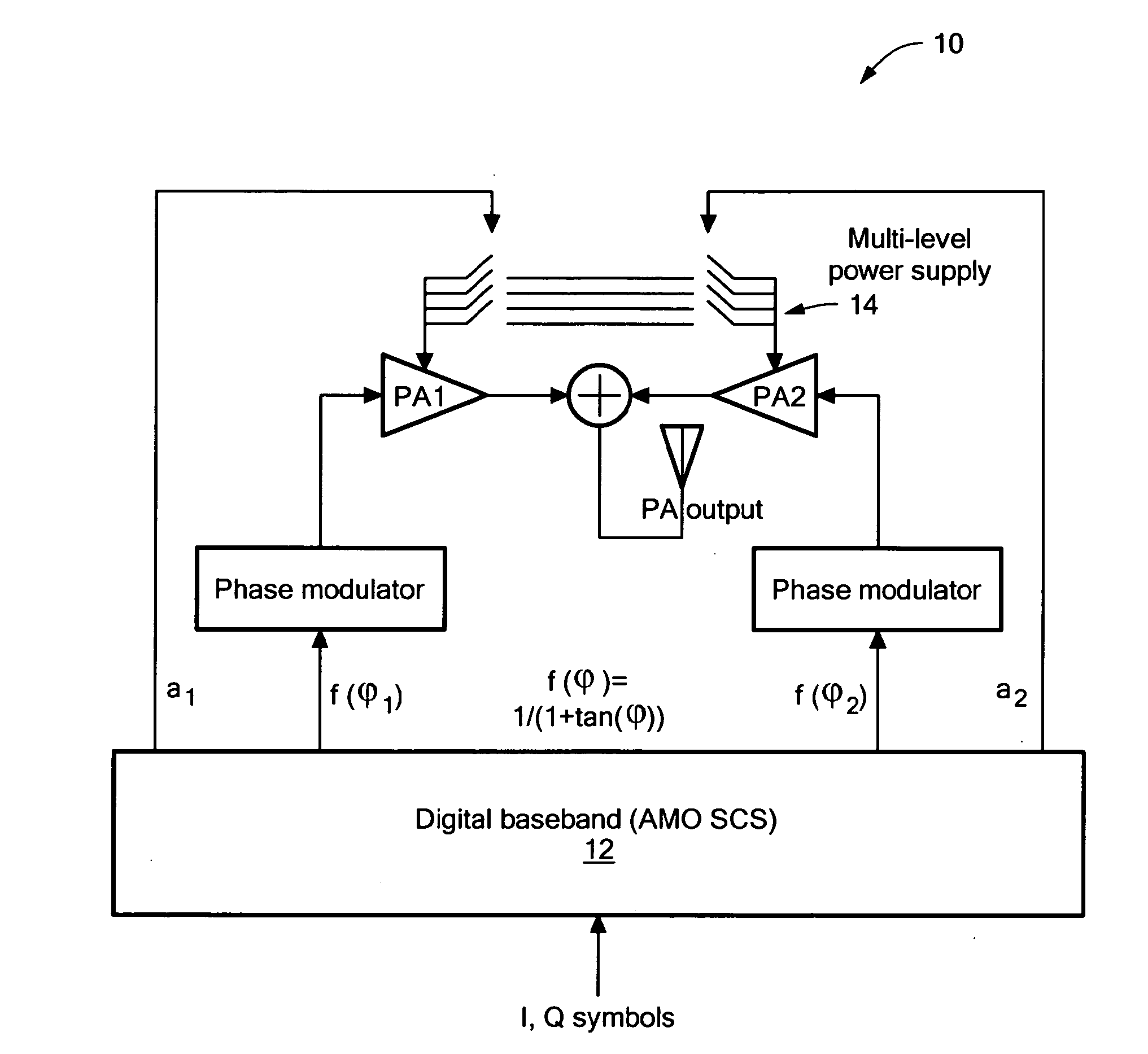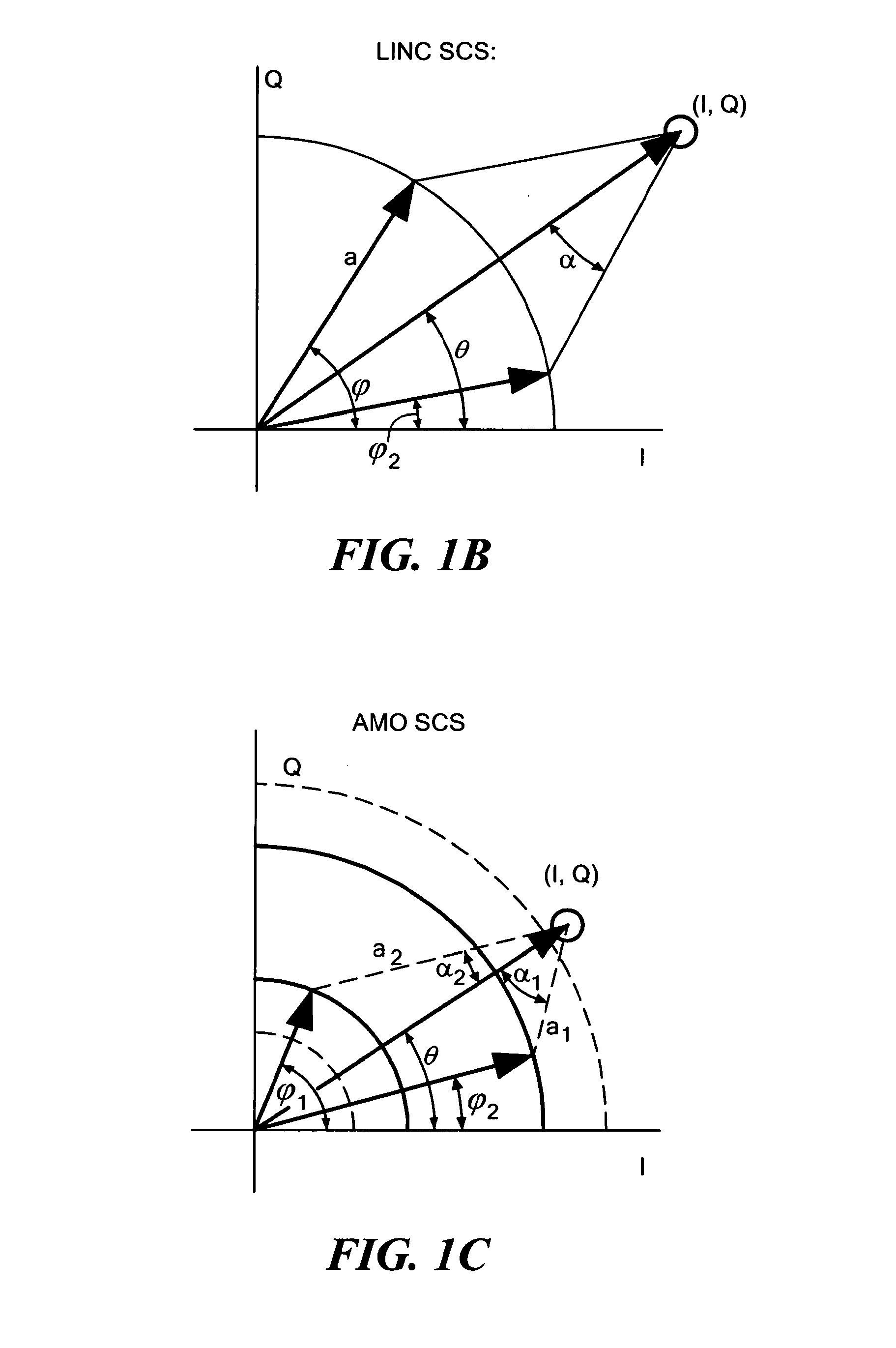Hardware-Efficient Signal-Component Separator For Outphasing Power Amplifiers
a signal-component separator and power amplifier technology, applied in the field of circuits and systems, can solve the problems of limited amplifier gain, significant challenge in the design of digital baseband systems, and great technical challenges in the design of transceivers, and achieve the effect of reducing (or minimizing) computational costs and high throughpu
- Summary
- Abstract
- Description
- Claims
- Application Information
AI Technical Summary
Benefits of technology
Problems solved by technology
Method used
Image
Examples
Embodiment Construction
[0051]Before describing a technique to compute a nonlinear function based upon a fixed point piece-wise linear (FP PWL) approximation of the nonlinear function some introductory concepts and terminology are explained.
[0052]It should be appreciated that, in an effort to promote clarity in the below description of the broad concepts described herein, reference is made herein to use of the FP PWL approximation technique in the context of a signal component separator (SCS). Such references to an SCS are not intended to be, and should not be construed as limiting. Rather, it should be understood that the broad concepts, systems and techniques described herein find use in a wide variety of different applications. In particular, the FP PWL techniques described herein may find use in any application in need of hardware implementations of nonlinear functions. The FP PWL techniques described herein may be particularly useful in any application in need of high-throughput, area and power constr...
PUM
 Login to View More
Login to View More Abstract
Description
Claims
Application Information
 Login to View More
Login to View More - R&D
- Intellectual Property
- Life Sciences
- Materials
- Tech Scout
- Unparalleled Data Quality
- Higher Quality Content
- 60% Fewer Hallucinations
Browse by: Latest US Patents, China's latest patents, Technical Efficacy Thesaurus, Application Domain, Technology Topic, Popular Technical Reports.
© 2025 PatSnap. All rights reserved.Legal|Privacy policy|Modern Slavery Act Transparency Statement|Sitemap|About US| Contact US: help@patsnap.com



